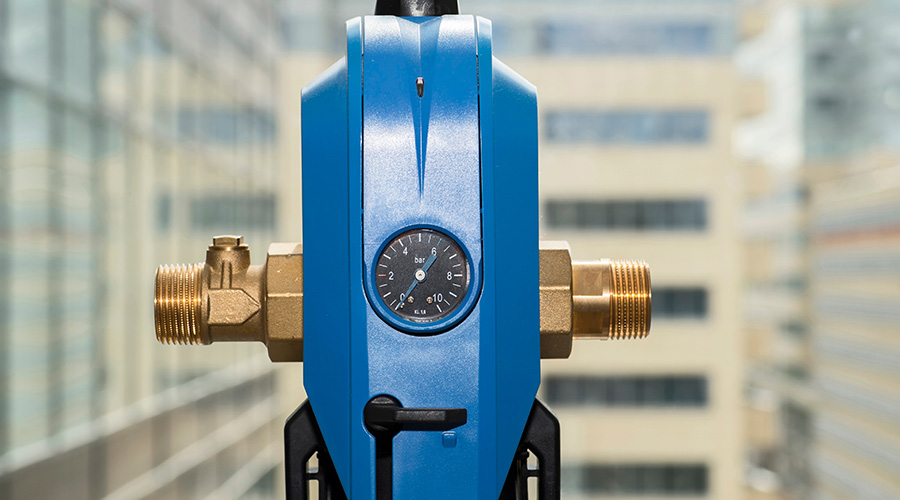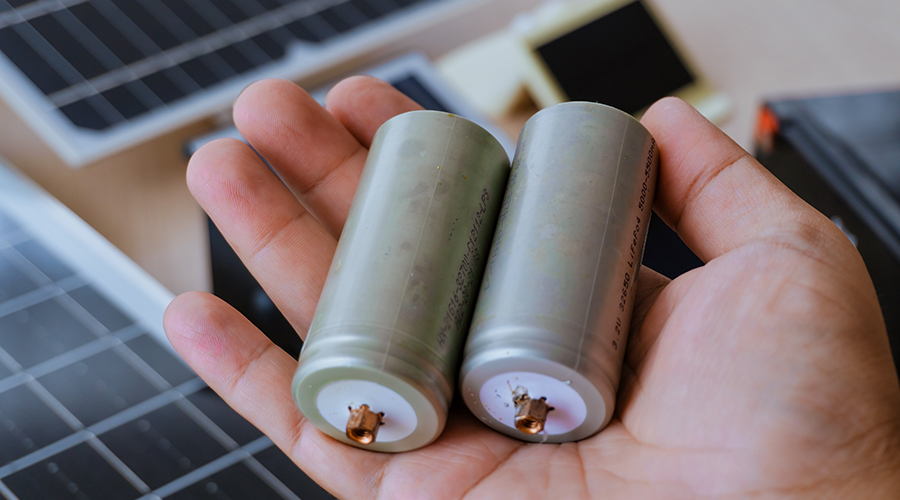
Keeping Emergency Communications Out of the 'Dead Zone'
Case study: New fire codes require ERCES to ensure first responders have reliable radio communication in buildings where materials and design features block signals. April 25, 2025
First responders such as fire, EMS and police depend on reliable two-way radio communication when lives and property are at risk. That’s not always an easy task in many buildings. In-building radio signals are often absorbed or blocked by structures that are larger, underground or constructed of concrete or metal. Additionally, building features designed to create more sustainable facilities such as low-E glass windows can attenuate the signal from public safety radio systems. When this occurs, weak or non-existent signals result in radio communication “dead zones” within commercial structures that can jeopardize coordination among and the safety of first responders during an emergency.
As a result, most fire codes now mandate the installation of Emergency Responder Communication Enhancement Systems (ERCES) for both new and existing commercial buildings. These advanced systems boost the signal inside the building, providing clear, two-way radio communication without dead spots.
“The challenge is that first responders operate on many different frequencies which vary significantly from city to city, so the ERCES equipment must be designed to amplify only the specific assigned channels,” says Trevor Mathews, wireless division manager at Cosco Fire Protection, a provider of business fire suppression and life safety systems for more than 60 years. The company has offered dedicated in-building radio communication system installation services for the past four years.
Mathews adds that this design usually involves tuning the ERCES to prevent signal interference with other frequencies and avoid running afoul of the FCC, which can levy significant fines when violations occur. In addition, companies often must install the entire system before the certificate of occupancy is issued. To meet the tight deadlines, installers rely on ERCES OEMs to quickly deliver the system components.
State-of-the-art ERCES are available that arrive “custom-tuned” by the OEM to the specific required UHF and/or VHF channel. The contractor can then further optimize the device onsite to the actual band frequencies with channel selective adjustments. The approach facilitates meeting all codes and requirements while reducing overall installation cost and complexity.
Effective ERCES Equipment
ERCES were first introduced in the 2009 International Building Code. The latest codes – such as IBC 2021 Section 916, IFC 2021 Section 510, 2019 NFPA 1221 Section 9.6, NFPA 1 2021 Section 11.10, and 2022 NFPA 1225 Chapter 18 – require all buildings to have an approved level of emergency communication coverage for first responders.
ERCES systems function by connecting through an over-the-air link that the installer optimizes to the public safety radio communications tower network, using a rooftop directional antenna. This antenna is then connected via coaxial cable to a bi-directional amplifier (BDA), which increases the signal level to provide sufficient coverage within the building, based on life safety standards. The BDA is connected to a distributed antenna system (DAS), a network of relatively small antennas installed throughout the building that serve as repeaters to improve the signal coverage in any isolated areas.
In larger buildings of 350,000 square feet or more, multiple amplifiers may be required to drive an adequate signal level across the system. Besides the building’s square footage, other criteria can also affect the number of amplifiers required, such as the building design, type of construction materials used, and the density of construction.
In a recent application, Cosco Fire Protection was tasked with installing an ERCES along with a comprehensive fire and life safety system at a large distribution center in Washington. To meet municipal requirements, Cosco Fire needed to install an ERCES tuned to VHF 150-170 MHz for the fire department and UHF 450-512 for police. The building was due to receive its certificate of occupancy in several weeks, so installation needed to be completed quickly.
To streamline the process, Cosco Fire selected the Fiplex by Honeywell BDA and fiber DAS system, from a leading manufacturer of commercial building fire and life safety systems.
The compliant and certified system was developed to reliably provide RF amplification and coverage without noise, enhancing two-way radio signal strength inside buildings, tunnels and other structures. The system is specifically designed to meet NFPA and IBC/IFC code compliance with the UL2524 Second Edition listing.
According to Mathews, one vital aspect that sets the ERCES apart is the ability of the OEM to “tune” the device to the channels used before shipping. The contractor can then further optimize the BDA’s RF tuning onsite to the precise frequency required with channel selective, software programmable or adjustable bandwidths. This eliminates the issue of wideband transmission in highly congested RF environments, which can otherwise cause outside interference and potentially lead to FCC fines.
Mathews points out another aspect that distinguishes Fiplex BDAs from other digital signal boosters: the availability of a dual-band option for dedicated UHF or VHF models.
“Combining the UHF and VHF amplifiers simplifies installation because you have one panel instead of two,” says Mathews. “It also reduces the necessary wall space, the power requirements, and potential points of failure. Annual testing is also easier.”
With conventional ERCES systems, fire and life safety companies must often source third party components to supplement the OEM’s package.
For a previous application, Mathews found it “difficult to get conventional ERCES equipment to work. We ultimately had to turn to a third party for the [signal] filters needed because the OEM wouldn’t provide them.” Mathews also said the lead time to receive the equipment was several months when he needed it in weeks.
In contrast, the Fiplex by Honeywell equipment was delivered in only a few weeks.
“With other suppliers, it could take 8-14 weeks to receive an amplifier,” explains Mathews. “Now we can get a custom tuned amplifier and install it with the DAS in five to six weeks. That is a game changer for contractors, particularly when there is a tight window for the installation.”
For building developers, architects or engineering firms wondering if an ERCES will be required in a new or existing building, the first step is to consult with a fire protection/life safety company that can conduct an RF survey of the space.
The RF Survey is accomplished by measuring the downlink/uplink signal strengths in decibels-milliwatts (dBm) using special measuring devices. Results are submitted to the authority with jurisdiction to determine if an ERCES system is required or if a waiver is appropriate.
“Testing early is preferable to reduce cost, complexity and simplify installation if an ERCES is required,” says Mathews. “If the building fails an RF survey at any point in time, whether completed construction is at 50 percent, 80 percent or 100 percent, the ERCES system will have to be installed, so testing earlier is better before installation becomes more difficult.”
Next
Read next on FacilitiesNet












